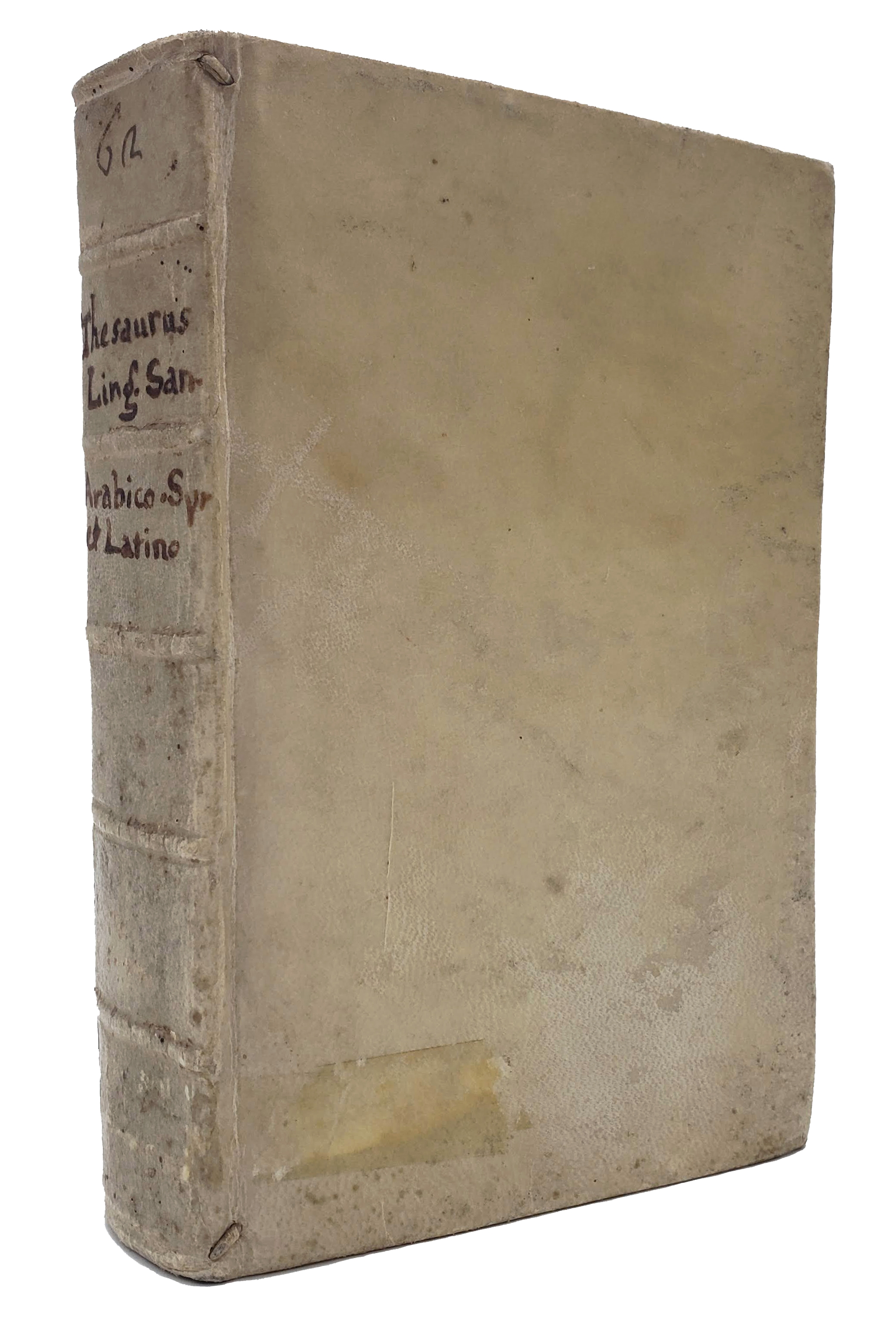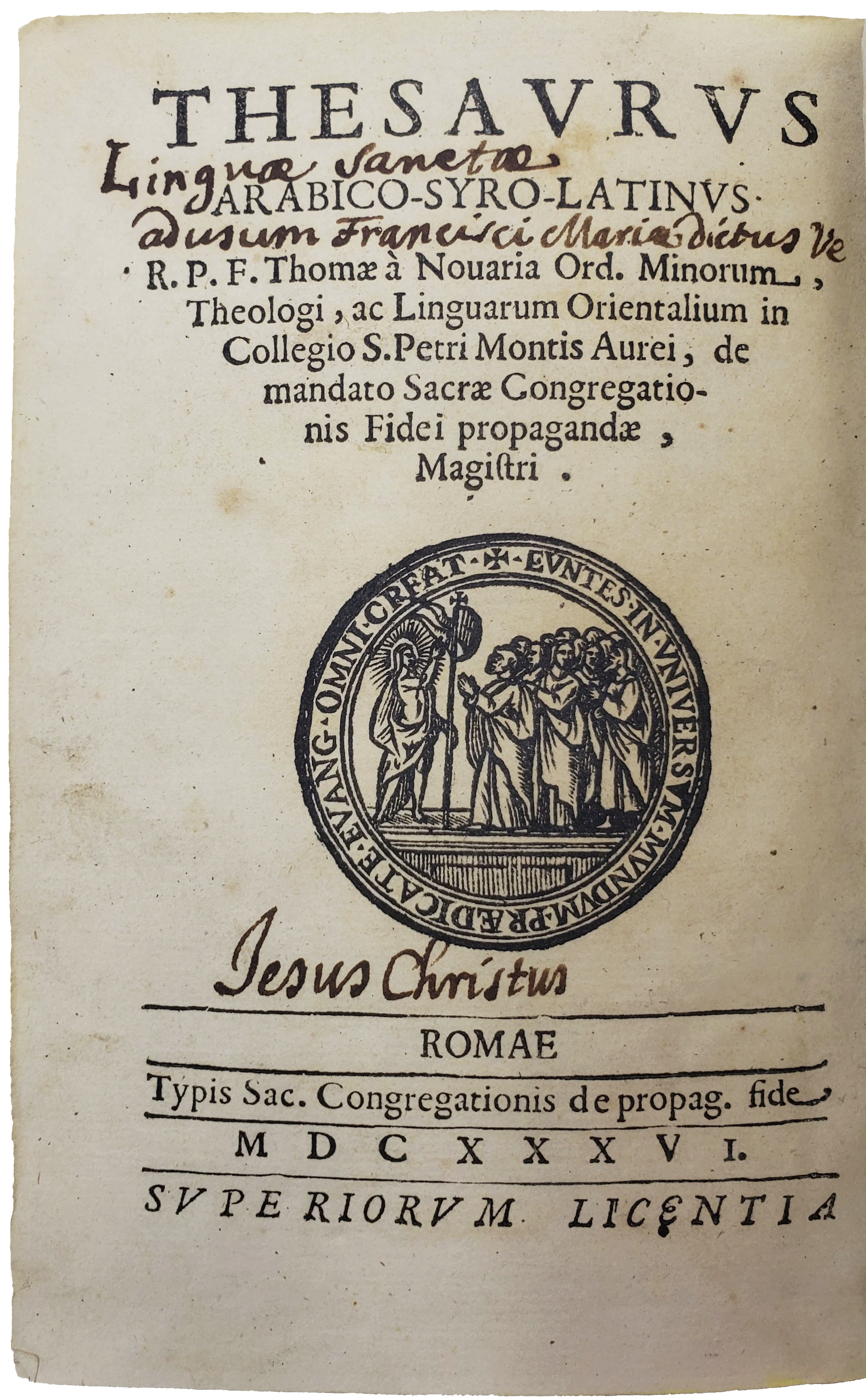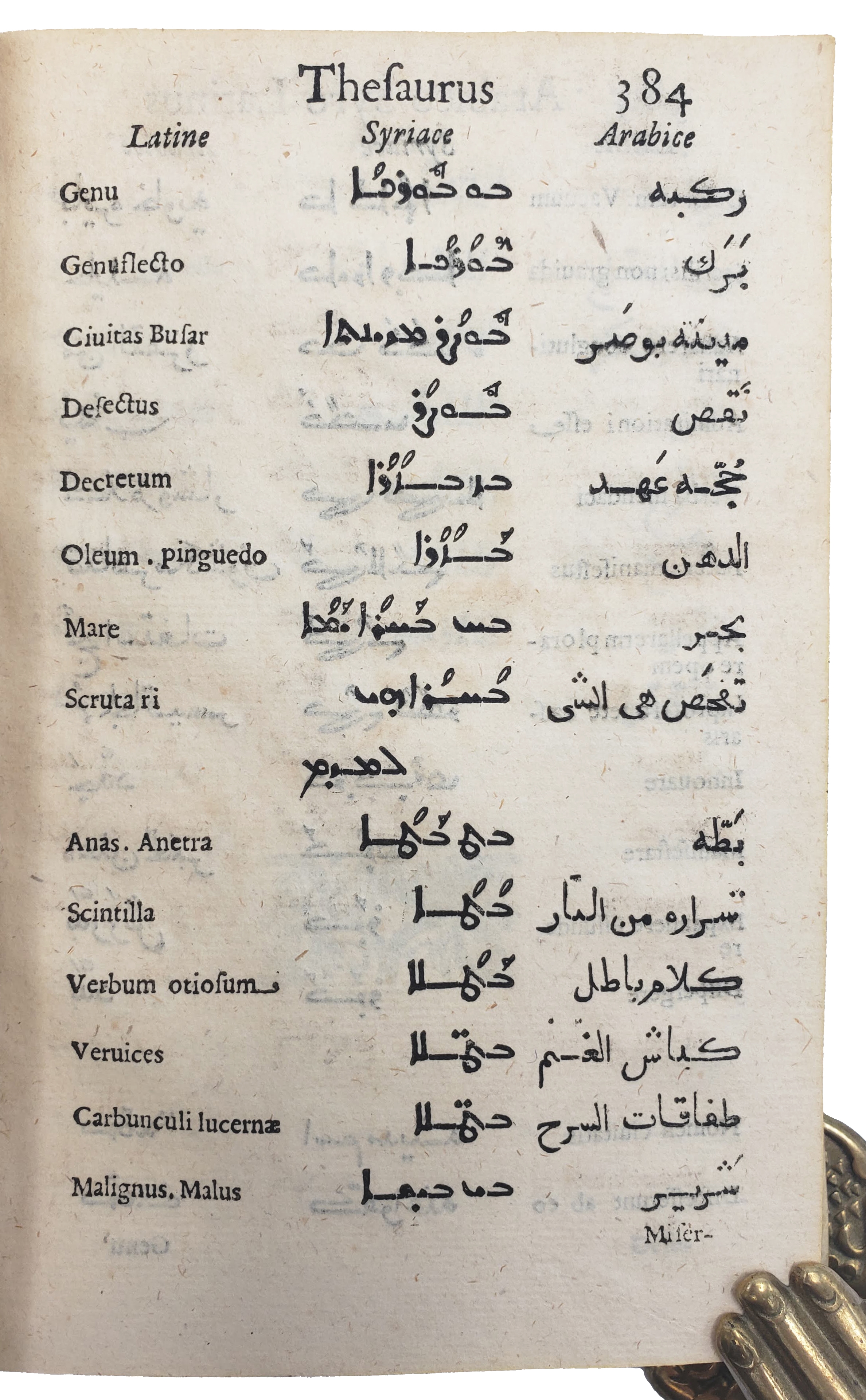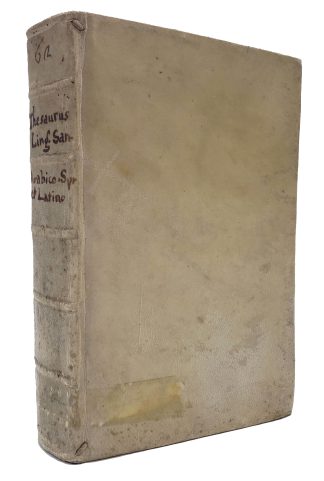OBICINI, Tommaso
GROUND-BREAKING ARABIC-SYRIAC GLOSSARY
Thesaurus Arabico-Syro-Latinus.
Rome, Typ. Sac. Congregationis de propag. fide, 1636.£3,750.00
FIRST EDITION. 8vo. pp. [8], 447, [45], index misbound. Roman, Arabic, Estrangelo and Syriac letter, little Italic. Woodcut printer’s device to title, decorated initials and ornaments. Light age browning, heavier to gatherings C-E. A very good copy in contemporary vellum over boards, early ms title to spine, near-contemporary ms ‘Linguae sanctae ad usum Francisci Mariae dictus Ve / Jesus Christus’ and ‘Finis’ to title, ms ‘Finis’ (same hand) to last verso.
From the library of Francesco Maria Maggi (1612-86), known as ‘Velli’, with his ms ownership ‘ad usum Francisci Mariae dictus [known as] Ve’, the last word clearly incomplete for lack of space. Maggi was an Orientalist and Theatian friar from Palermo, who spent a decade in the Near and Middle East, and Persia, bringing back to Rome the knowledge of Semitic languages as well as Georgian and Armenian. His ‘Syntagmata linguarum orientalium’, a grammar of Georgian with comparative studies of Turkish and Semitic languages, was published by the Propaganda Fide in 1643.
First edition of this ground-breaking early, influential comparative glossary of Arabic, Syrian and Latin, with a splendid provenance. Tommaso Obicini (1585-1632) was a Franciscan and specialist in Middle Eastern and Semitic languages. He translated numerous Arabic texts into Latin, and spent time in the Franciscan missions in Palestine, Syria and Lebanon. He was later professor of Arabic at the monastery of San Pietro in Montorio, a centre for Arabic studies. Published posthumously, with a preface by the Orientalist Dominicus Germanus, ‘Thesaurus’ was greatly inspired by the Nestorian Elijah of Nisibis’ (946-1046) Syriac grammar and Arabic-Syriac vocabulary, ‘Kitāb at-Tarjumān fi ta’līm lughat as-Suryān’, which used Garshuni, i.e., the writing of Arabic using the Syriac alphabet. The Syriac type used in ‘Thesaurus’ was acquired by the Press in 1627.
Like all modern glossaries, this work for missionaries is divided into chapters, each devoted to a specific topic: e.g., liquors and wines, clothes, tools, animals (with a section on camels), birds, food, plants (with a section on palm trees), society, the human body, the sky, minerals, etc. It includes an extensive table of contents and index for easier use. The first few sections list the names of the Christian god, angels, demons, philosophical terms, and vocabulary for natural science. There are interesting sections on medicine – comprising Latin, Arabic and Syriac terms for medical instruments, various kinds of remedies and herbs, as well as illnesses, head to foot – on navigation, musical instruments (including the Arabic ‘oud’ and ‘darbouka’), tools used by sundry kinds of craftsmen, materials for writing and calligraphy, and horses and harness. The last chapter is devoted to Syriac nouns which are written in an identical manner but have multiple meanings (polysemic). An important work.
USTC mentions another ed. from the same year – priority not established – with the imprint ‘Roma, apud Giuseppe Luna, 1636’, recorded in one copy only. It may just be a different issue, or an earlier version of the titlepage, printed by the renowned compositor of the Propaganda Fide for Semitic languages.
USTC 4014344. A. Brunialti, Le colonie degli italiani (Torino, 1897); W. Wright, A Short History of Syriac Literature (1894); BMC Arabic Books I, 506.




